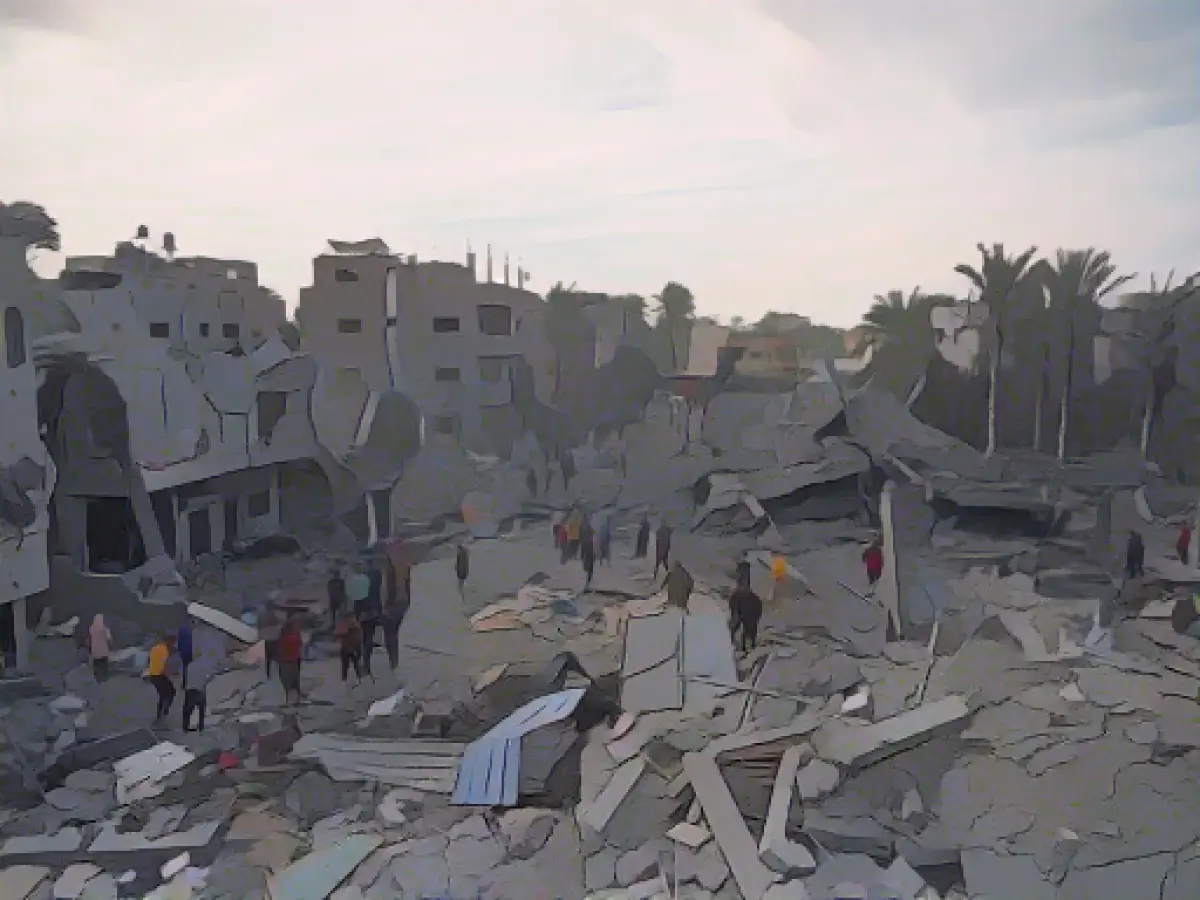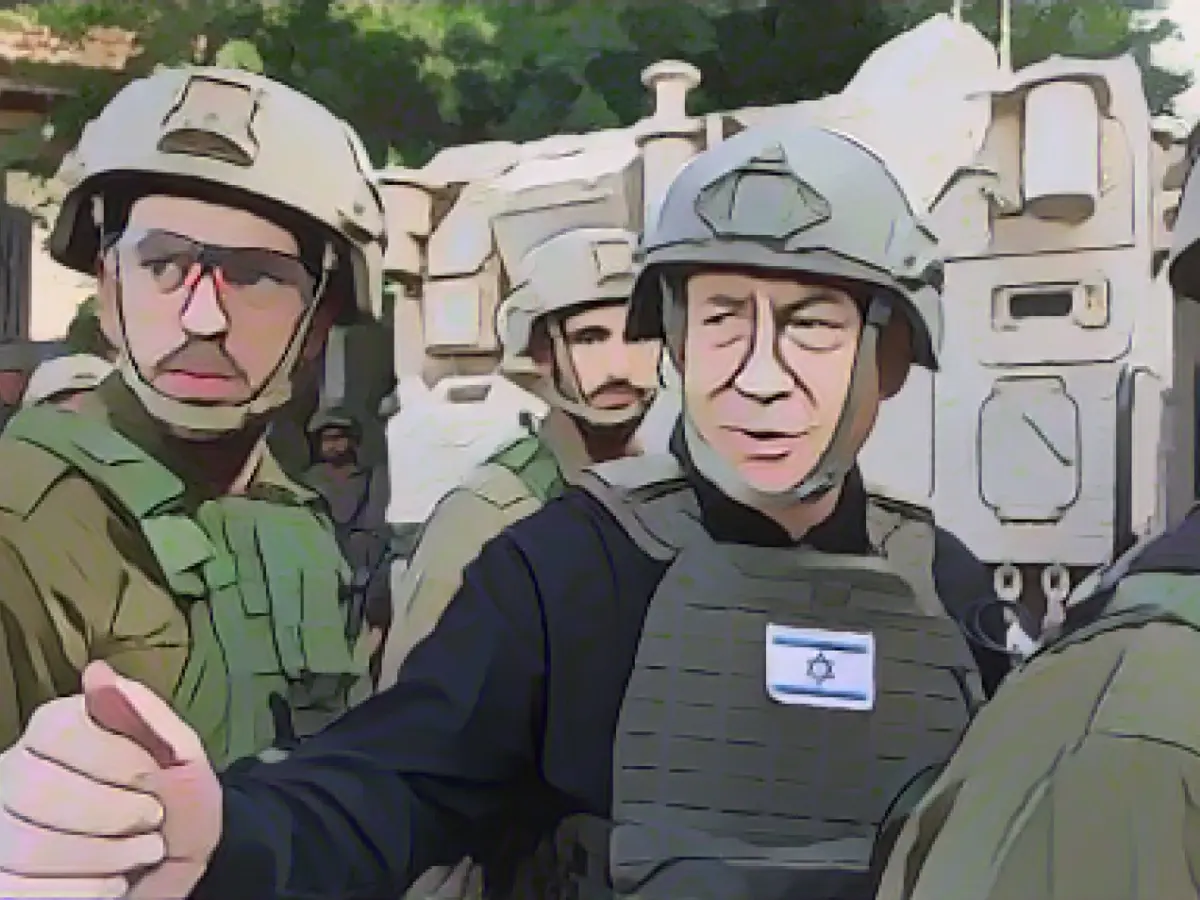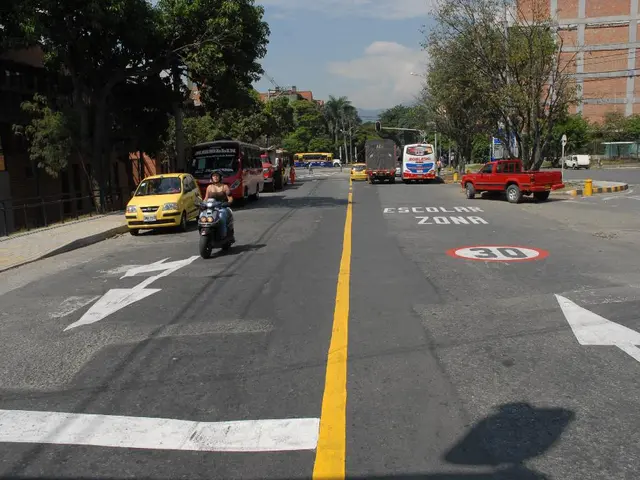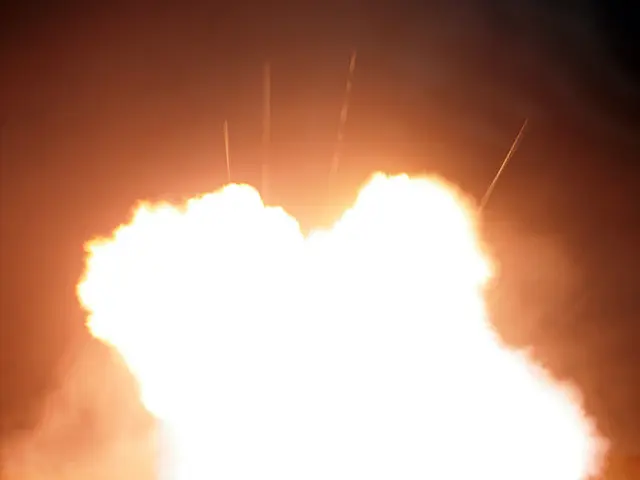Title: The New Chapter in Israel-Hamas Ceasefire Agreement: A Deep Dive
In the latest development, Israel has shared details about the ceasefire agreement with Hamas, which includes the release of Palestinian prisoners in exchange for Israeli hostages. As per media reports, this ten-day operation will commence with the initial release of hostages following a cabinet decision published by the Israeli government.
The Plan
The operation will last a maximum of ten days, involving the exchange of up to 300 Palestinian prisoners for up to 100 live hostages from Israel. The Israeli army's counter-terrorism operation against Hamas and other Islamist extremists in Gaza Strip will continue after this period.
Reportedly, Israel will be allowed to provide Hamas with the names of the 100 hostages to be released. This deal also entails that kidnapped mothers and children would not be separated upon release.
Hostage and Prisoner Exchange
The hostages must be Israeli citizens or residents of the country. Nevertheless, the specific criteria have not been disclosed.
The exchange will occur in two phases:
- The first phase will see the release of 150 Palestinian prisoners as soon as 50 hostages have been released. This release will be carried out in stages within four days, with at least 10 hostages released daily.
- The second phase will involve the release of up to 150 more Palestinian prisoners from Israeli prisons, if in return, up to 50 hostages are released. At least 10 abductees will need to be released each time. A 24-hour ceasefire will be enforced for every 10 hostages released.
Appeals and Prisoner Controversy
Relatives of terror victims, among others, can appeal to the Supreme Court within 24 hours against the release of certain Palestinian prisoners. However, there are no expectations of the court overturning the government's decision.
This agreement also aims to address conflicts relating to the release of prisoners, which might involve Palestinian prisoners involved in conflicts with Israel, particularly Hamas activities.
Sources:
Enrichment Data:
The detailed agreement between Israel and Hamas includes several phases aimed at achieving a sustainable calm and a permanent ceasefire.
In Phase One, the release of three hostages took place on the first day, followed by four more on the seventh day. Subsequently, three hostages were released every seven days, and the final 14 hostages were released in the final week of the first phase.
A total of 1,900 Palestinian security prisoners were released in exchange for 33 Israeli hostages. Among these prisoners, 30 were serving life sentences for terror-related activities.
The release of 9 ill and wounded hostages required the release of 110 additional prisoners with life sentences. Israel agreed to allow the entry of 600 humanitarian aid trucks daily and began withdrawing from specific population centers in Gaza.
In Phase Two, negotiations will begin 16 days after the implementation of phase one to release all remaining hostages and achieve a permanent ceasefire and full troop withdrawal from Gaza.
The redeployment and Rafah Crossing will involve the Philadelphi corridor, allowing the safe transfer of civilians and wounded.
Practical procedures for the exchange, withdrawal, and crossings were also agreed upon.








